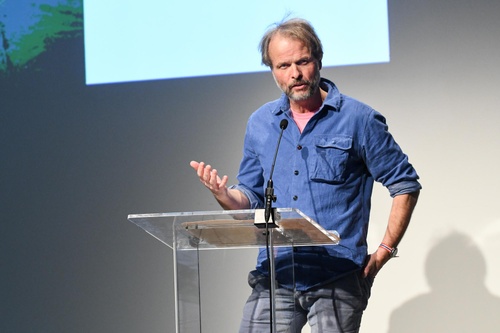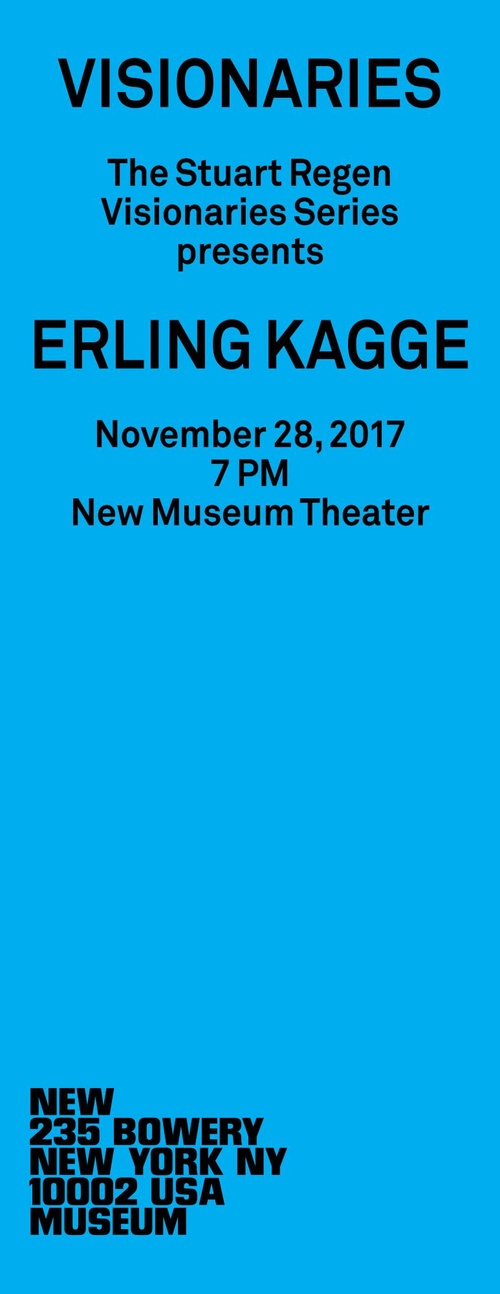Visionaries Series: Erling Kagge
On November 28, 2017, explorer, writer, and art collector Erling Kagge delivered the year’s Visionary lecture, as part of the Stuart Regen Visionaries Series. The series was founded to honor forward-thinking individuals in art, architecture, design, film, and related disciplines of contemporary culture. The lecture marked the annual series’ ninth year of spotlighting innovators who shape intellectual life and the future of culture.
One of the world’s great explorers, Kagge earned recognition for a number of extraordinary accomplishments. He was the first person to surmount the “three poles” (North Pole, South Pole, and the summit of Mount Everest); the first person to walk alone to the South Pole; and in 1990, with Børge Ousland, the first person to reach the North Pole unsupported. To complete the first unsupported expedition to the South Pole in 1992–93, Kagge covered 814 miles in fifty days, leading to a feature on the cover of TIME magazine. Kagge’s explorations continued in new forms over the years: in 2010 he and urban historian Steve Duncan hiked through the sewers, subways, and water tunnels of New York, walking for five days from the Bronx, through Manhattan, to the Atlantic Ocean. After reaching the three poles, Kagge studied philosophy at Cambridge University, and in 1996 he founded the Oslo-based publishing house Kagge Forlag, which quickly became one of Norway’s leading book publishers. A leading collector of international contemporary art and Russian icons in addition to his explorations, Kagge wrote a number of books—translated into several languages—on exploration, philosophy, and art collecting, and contributed to publications including the Guardian.
Kagge’s lecture was delivered in conjunction with the publication of his book, Silence: In the Age of Noise (Pantheon Books, November 2017), an exploration of and meditation on silence through his own experiences and the observations of poets, artists, and explorers.

